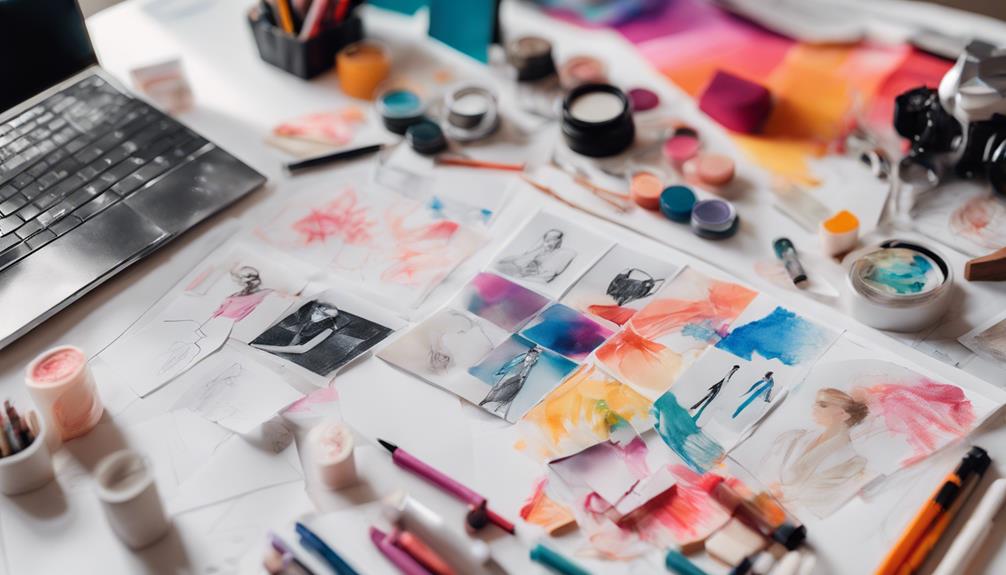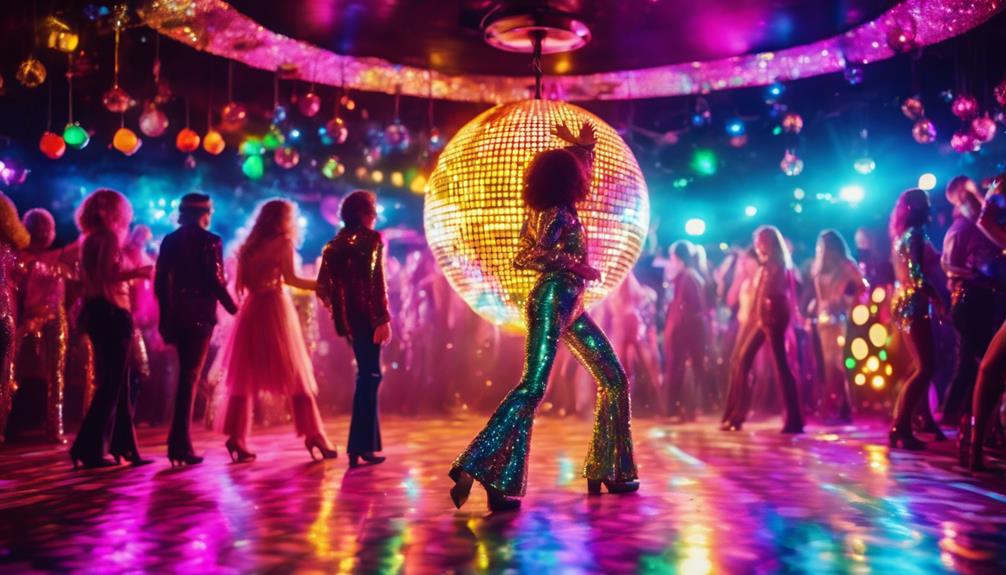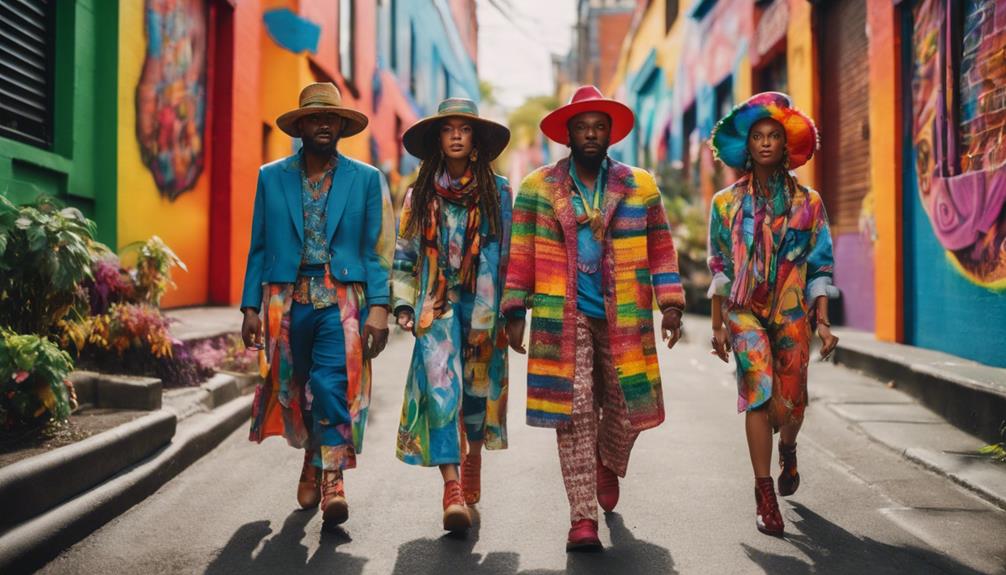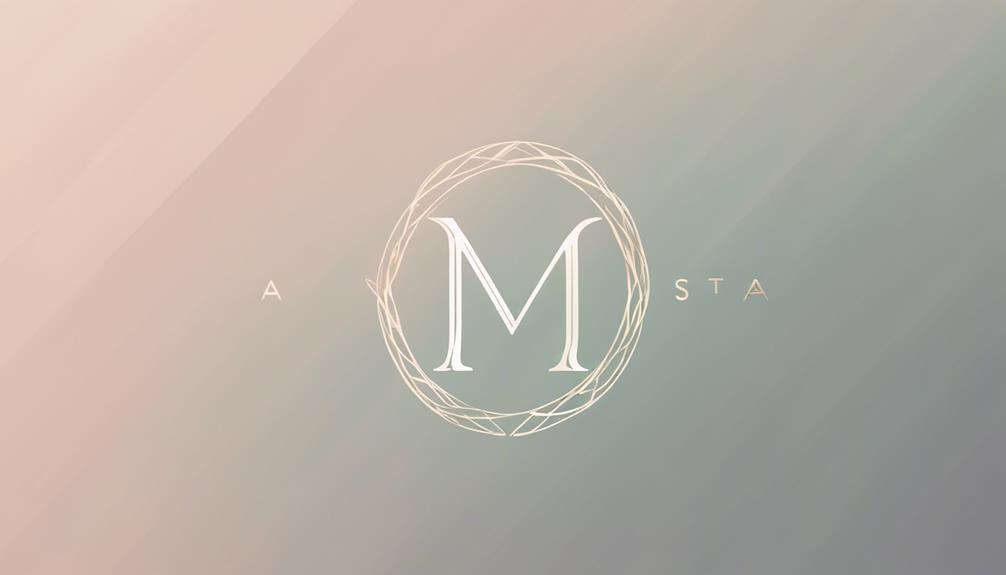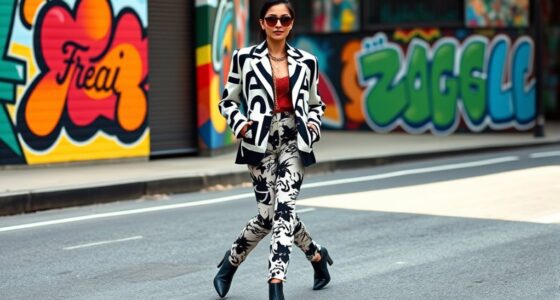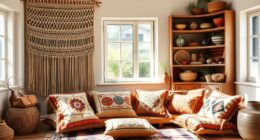Fashion croquis serve as your doorway to creating trendy and impactful fashion illustrations. You will master the art of emphasizing silhouette and proportion, while experimenting with different fabrics such as silk and denim to add texture. Croquis offer the opportunity to play with exaggerated body proportions, typically ranging from 8 to 11 heads tall, to infuse dynamism into your designs. As you delve into contemporary influences and eco-friendly practices, you will draw inspiration from timeless fashion trends. Additionally, incorporating effective styling tips will enhance the quality of your illustrations. Stick with us to uncover the essential tools and innovative techniques that will enhance your skills in this captivating art form.
Key Takeaways
- Fashion croquis emphasizes exaggerated proportions, typically 8 to 11 heads tall, enhancing the visual appeal of illustrations.
- Experiment with various fabrics like silk, denim, and leather to capture texture and garment characteristics in your designs.
- Incorporate dynamic poses to showcase how garments interact with movement, adding life to your fashion illustrations.
- Utilize digital tools like Adobe Fresco for intricate detailing, merging traditional techniques with modern technology.
Origin and historical background of the fashion trend/style
When you explore the origins of fashion croquis, you'll see how trends have evolved through the decades.
Fashion icons and innovators have shaped these styles, pushing boundaries and inspiring countless designers.
Understanding this history enriches your appreciation of contemporary fashion illustration.
Fashion Trends Through Decades
Fashion trends have transformed dramatically over the decades, each era reflecting the social, political, and cultural shifts of its time.
In the 1920s, the flapper style emerged, featuring loose silhouettes that celebrated women's liberation. Fashion illustration of this era often showcased quick sketches of these new, daring designs.
Moving into the 1960s, youth culture took center stage, with bold patterns and mini skirts symbolizing rebellion. Iconic designers like Mary Quant influenced fashion design, creating a vibrant scene.
The 1970s embraced diversity, blending bohemian looks with disco fashion, fueled by music and the rise of subcultures like punk.
By the 1980s, extravagance reigned with power dressing and shoulder pads, mirroring women's growing roles in the corporate world. Designer labels gained popularity, and fashion illustration highlighted these bold styles.
As we reached the 1990s and early 2000s, minimalist aesthetics and casual wear became the norm. Grunge and streetwear reflected a cultural shift towards comfort and individuality.
Each decade, with its unique styles, has shaped the way we view fashion today, demonstrating how interconnected our clothing choices are with broader societal changes.
Fashion Icons and Innovators
Coco Chanel and Christian Dior laid the groundwork for modern fashion, introducing revolutionary styles that emphasized elegance and femininity in the early to mid-20th century. Chanel's 'little black dress' became a staple, while Dior's 'New Look' redefined women's silhouettes.
As you explore fashion sketching, remember these icons' influence on aspiring fashion illustrators.
The 1960s brought icons like Twiggy and Yves Saint Laurent, who challenged norms with androgynous silhouettes and the 'beatnik' look. Their boldness inspired a new wave of creativity in the fashion industry.
In the 1980s, Gianni Versace and Jean-Paul Gaultier further pushed boundaries with vibrant colors and prints, celebrating body positivity and diversity.
The 1990s introduced the grunge movement, driven by Marc Jacobs and bands like Nirvana, blending casual with high fashion to reflect individuality.
In today's fashion landscape, contemporary icons like Rihanna and Virgil Abloh merge streetwear with luxury, driving trends that emphasize inclusivity and cultural commentary.
These innovators not only shaped styles but also inspired countless fashion illustrators to capture the essence of their groundbreaking contributions.
Embrace their legacies as you develop your own fashion illustrations.
Key Characteristics
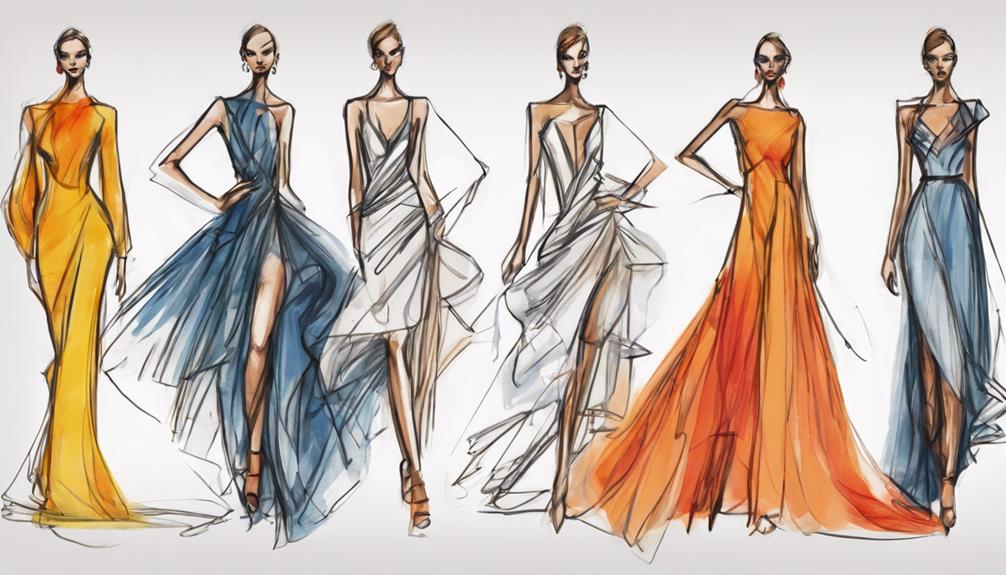
When you're sketching croquis, focus on silhouette and proportion techniques to create striking visuals that highlight your designs.
Don't forget to experiment with different fabrics like silk, denim, and leather, as each material brings a unique texture to your illustrations.
And remember, capturing the essence of timeless pieces like the little black dress can elevate your fashion croquis greatly.
Silhouette and Proportion Techniques
Exaggerated proportions in croquis, often ranging from 8 to 11 heads tall, enhance the visual appeal and fluidity of garment designs.
When you create croquis drawings, focus on elongated body shapes and fluid lines to convey elegance. Start by establishing basic body proportions, dividing the human body into sections, with the head as your primary measurement unit for consistency.
To add life to your illustrations, incorporate dynamic poses that showcase how garments interact with movement and body angles. This approach not only highlights the design but also captures the essence of the clothing in action.
Begin your sketches with light strokes for initial outlines; this makes it easy to adjust proportions and poses before you finalize the silhouette with more defined lines.
Fabrics: Silk, Denim, Leather
Silk, denim, and leather each bring distinct characteristics to fashion, influencing everything from garment design to overall wearability.
Silk is a luxurious fabric known for its smooth texture and natural sheen. Its elegant drape makes it perfect for evening wear and other sophisticated garments, while its breathable nature keeps you comfortable in warm climates.
On the other hand, denim is a sturdy cotton twill that's primarily used in jeans. It's recognized for its durability and gets softer with wear without losing its shape, making it a staple in casual fashion.
Leather, made from animal hides, stands out for its unique texture and resilience. It ages beautifully, developing a patina that adds character over time. However, leather requires special care to maintain its appearance, often needing conditioning and protection from water and extreme temperatures.
Each fabric serves a purpose in your wardrobe, so understanding their key characteristics will help you make informed choices when illustrating your designs or selecting garments.
Whether you're drawing a flowing silk gown, a rugged denim jacket, or a chic leather piece, knowing these fabrics will enhance your fashion illustrations and designs.
Timeless Little Black Dress
The timeless little black dress (LBD) embodies versatility, making it a staple that easily shifts from casual outings to elegant soirées. This iconic piece, popularized by Coco Chanel in the 1920s, features a simple yet elegant design that flatters a variety of body types. Artists use the LBD as a canvas to showcase their creativity, often highlighting its classic silhouette with horizontal lines or chic details.
Key characteristics of the LBD include a fitted bodice, a defined waist, and varying lengths, from knee to midi. These elements allow the dress to maintain an air of sophistication while being easy to accessorize. You can transform your look effortlessly with simple additions like statement jewelry, a stylish belt, or a tailored jacket.
Crafted from luxurious fabrics like silk, chiffon, or crepe, the timeless little black dress is a reflection of elegance and function. Its ability to adapt to different occasions makes it an essential piece in every woman's wardrobe. When you wear an LBD, you're not just dressing for the moment; you're embracing a fashion legacy that continues to inspire.
Modern Interpretation
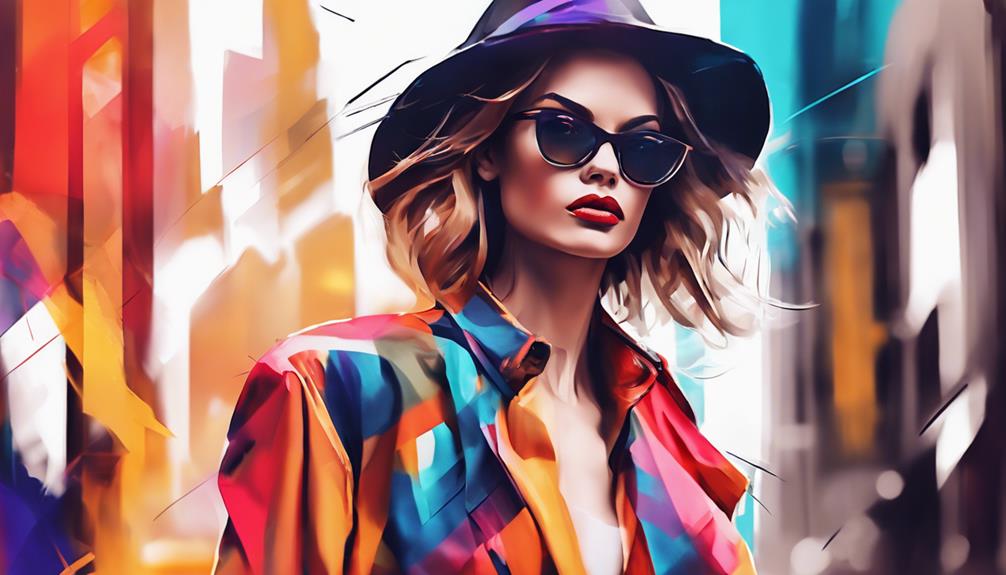
In the domain of modern croquis, you'll see how sustainable fashion movements are shaping new design philosophies.
Luxury fashion houses are reinterpreting classic styles to align with contemporary values, while A-list trendsetters influence what's considered chic today.
This evolution reflects a broader understanding of beauty and style, urging you to rethink traditional fashion narratives.
Sustainable Fashion Movements
Sustainable fashion movements are reshaping the industry by prioritizing eco-friendly materials and encouraging mindful consumption.
In the world of fashion, this shift means a significant rise in the use of organic cotton, which increased production by 50% between 2019 and 2021. You'll find that the 'slow fashion' movement promotes buying fewer, high-quality pieces, potentially reducing clothing waste by up to 70% when widely adopted.
Brands are also embracing circular fashion practices, like recycling and upcycling, which can cut their environmental impact by as much as 80% compared to traditional fast fashion. The global sustainable fashion market is projected to reach $8.25 billion by 2023, indicating a strong consumer demand for ethically produced clothing.
Initiatives like the Fashion Pact, launched in 2019, have united over 60 major companies, committing to reduce greenhouse gas emissions. This collective effort aims for a more sustainable future in fashion.
Luxury Fashion Houses
How do modern luxury fashion houses like Chanel and Gucci redefine elegance through a blend of traditional craftsmanship and contemporary design?
These brands showcase unique interpretations of classic styles that resonate with today's fashion enthusiasts. You'll notice that croquis illustrations play a vital role in visualizing these innovative designs, allowing designers to experiment with proportions and silhouettes before bringing their ideas to life.
Many high-end fashion houses collaborate with renowned fashion illustrators to create exclusive artworks that capture their distinct brand identities. This enhances their marketing and promotional materials, making them more engaging.
With the advent of digital tools like Adobe Fresco, designers gain greater flexibility and precision in their croquis sketches. This means they can add intricate details and textures that reflect luxury fabrics, elevating the overall aesthetic.
Moreover, sustainability is now a key focus for these luxury brands. They're incorporating eco-friendly materials and practices into their collections, often represented through innovative croquis designs that highlight these values.
A-List Fashion Trendsetters
A-list fashion trendsetters are redefining the industry by using croquis to express their unique visions and adapt to the constantly changing landscape of modern fashion. They often rely on these quick sketches to visualize and communicate their design ideas, showcasing their distinctive styles and perspectives.
Many modern designers, especially those from luxury brands, emphasize exaggerated body proportions in their croquis, typically rendering figures between 8 to 11 heads tall. This approach enhances the movement and drape of their garments, creating a dynamic visual impact.
Trendsetters draw inspiration from diverse body shapes and poses, using croquis as a canvas to explore various aesthetics and foster inclusive fashion narratives.
Digital tools play a significant role in this process, allowing designers to create intricate illustrations with layers and custom brushes that mimic traditional techniques while streamlining their workflow.
Additionally, fashion magazines and social media platforms serve as essential resources for trendsetters. They help you stay updated on the latest styles and influences that can be incorporated into your croquis and designs, ensuring you remain at the forefront of the fashion world.
Styling Tips
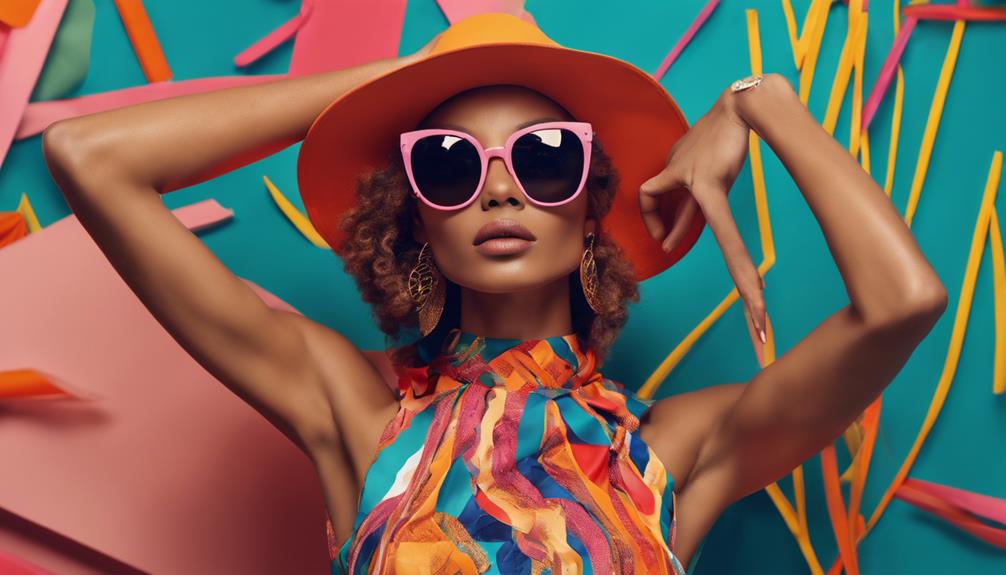
When styling your croquis, a classic white button-up shirt can be a versatile foundation for any outfit.
You can experiment with seasonal layering techniques to add depth and interest to your designs.
Don't forget to play around with color combinations to create striking visual contrasts that catch the eye.
Classic White Button-Up Shirt
Embracing the classic white button-up shirt can instantly elevate your wardrobe, offering endless styling possibilities for any occasion. This versatile piece can be dressed up or down, making it perfect for both professional settings and casual outings.
For a polished look, pair your white button-up with tailored trousers. This combination exudes sophistication and is ideal for meetings or formal events. If you're aiming for a more relaxed vibe, distressed jeans work beautifully with the shirt, giving off a laid-back yet stylish feel.
Don't forget about layering! A fitted blazer or a lightweight sweater over your button-up can add depth and warmth, perfect for cooler days. To further enhance your outfit, accessorize with statement jewelry or a bold belt; these elements can transform the simplicity of the shirt into something eye-catching.
You can also play with silhouettes by tucking the shirt at the waist for a tailored effect or leaving it untucked for a more casual look. This flexibility allows you to express your personal style while maintaining a clean and sophisticated aesthetic.
Seasonal Layering Techniques
Mastering seasonal layering techniques not only keeps you comfortable as temperatures fluctuate but also allows you to showcase your personal style through creative combinations. Start by mixing various clothing pieces, like lightweight tops, sweaters, and outerwear. This adaptability guarantees you're ready for any weather while enhancing your wardrobe's versatility.
When layering, pay attention to the proportions of each piece. Pair fitted items with looser ones to create visual interest and maintain comfort. Textures are equally important; combine fabrics like knits, denim, and leather to add depth and dimension to your outfit.
Accessorizing can elevate your layered looks considerably. Incorporate scarves, hats, and belts to provide extra warmth and style, while also allowing for personal expression. These accessories not only complete your outfit but also serve practical purposes.
Lastly, focus on color coordination. Choose a cohesive color palette or complementary tones to guarantee your layers work harmoniously together. This approach prevents overwhelming your overall look and keeps your outfit polished.
Embrace these seasonal layering techniques, and you'll achieve stylish outfits that adapt to changing temperatures with ease.
Color Combinations for Outfits
Choosing the right color combinations for your outfits can transform your look and reflect your personal style. Start by using the color wheel to find complementary colors that enhance each other—think blue with orange or red paired with green. These combinations can make your outfit pop!
Monochromatic outfits are another great option. By using varying shades and tints of a single color, you can achieve a sophisticated and cohesive look. This approach allows for easy accessorizing without overwhelming your outfit.
Don't forget about neutrals! Incorporating black, white, or beige can balance bolder colors and provide a solid foundation for vibrant hues.
To create a visually appealing outfit, apply the 60-30-10 rule: dedicate 60% of your outfit to a dominant color, 30% to a secondary color, and 10% to an accent color. This method guarantees harmony and balance in your look.
Shopping Guide

When shopping for fashion illustration supplies, consider what tools and resources will best augment your creativity and skills. Start with sketchbooks or drawing pads designed specifically for fashion illustration. These often feature pre-printed croquis templates, making it easier for you to practice and refine your technique.
Next, invest in a variety of drawing tools. High-quality pencils, fine liners, and markers are essential for creating detailed fashion sketches. You want to make sure your illustrations stand out, so choose tools that allow for precision and clarity.
If you're inclined toward digital art, look into drawing tablets that work well with software like Adobe Fresco. These tablets offer versatility and clean illustrations, plus customizable brushes to match your style.
Don't forget to explore fashion magazines and blogs for inspiration. They provide a wealth of visual references that can spark new ideas for your croquis and designs.
Finally, consider picking up instructional books such as 'The Art of Fashion Illustration.' These resources offer valuable guidance on techniques and styles, enhancing your learning experience in the world of fashion illustration.
Happy shopping!
Upcycling Vintage Clothing Techniques
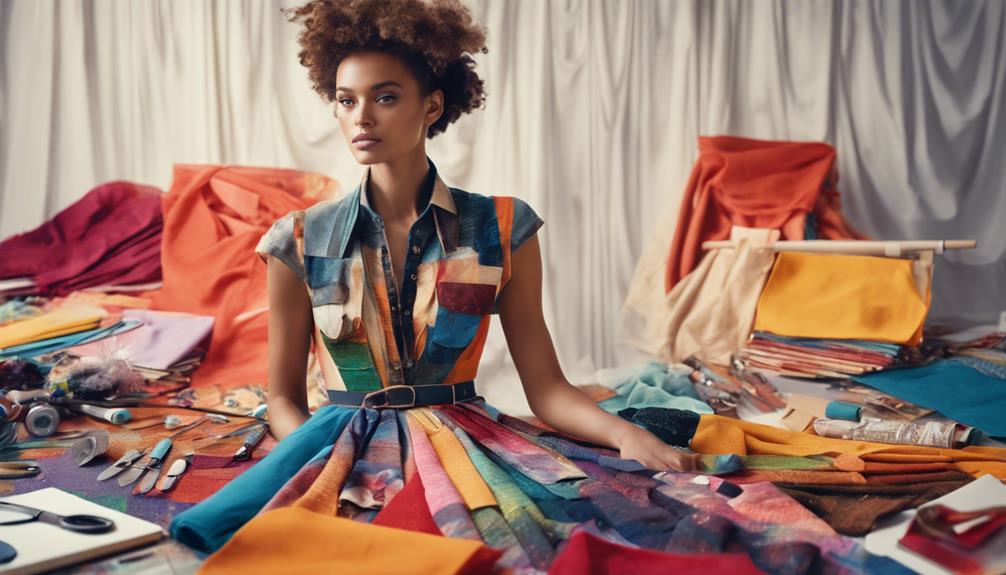
When you're upcycling vintage clothing, think about how you can repurpose old accessories to enhance your new designs.
Alteration techniques can help you achieve the perfect fit, transforming loose pieces into stylish, tailored silhouettes.
With a little creativity, you can make each garment truly your own while embracing sustainable fashion.
Repurposing Old Accessories
Repurposing old accessories not only breathes new life into forgotten pieces but also champions sustainability in fashion. By creatively transforming vintage items, you can reduce waste while adding a unique flair to your wardrobe. For instance, a vintage scarf can become a chic hair wrap or a stylish embellishment for a bag, showcasing your creativity.
Explore various techniques to breathe fresh air into outdated pieces. Sewing, dyeing, or adding embellishments like patches or beads can enhance their character while making them relevant again. Vintage buttons can be transformed into statement jewelry or decorative elements on your clothing, allowing for personal expression that stands out.
Incorporating these old accessories into your modern outfits not only sets you apart but actively contributes to eco-friendly practices. Understanding the history and craftsmanship behind vintage items can also inspire innovative designs, deepening your appreciation for sustainable fashion.
Alteration Techniques for Fit
Alteration techniques can dramatically enhance the fit of vintage clothing, making it feel like it was tailor-made just for you.
One effective method is taking in seams, which can reduce the garment size by up to 2 inches per side. This adjustment helps create a snugger fit that flatters your shape. Adding darts or tucks can further refine the garment, shaping the fabric around your bust or waist for a more tailored silhouette.
Hemming a dress or skirt not only adjusts the length but also modernizes the piece. You can typically raise or lower the hem by 1 to 3 inches, depending on your style preference.
If you're dealing with a loose-fitting garment, consider incorporating elastic or drawstrings into the waist. This change transforms the fit while offering comfort for various body shapes.
Lastly, don't forget patchwork techniques. These can creatively repair or embellish vintage pieces, allowing you to showcase your unique style and extend the life of the garment.
Embrace these alteration techniques, and you'll breathe new life into your vintage finds while achieving that perfect fit.
Cultural Impact
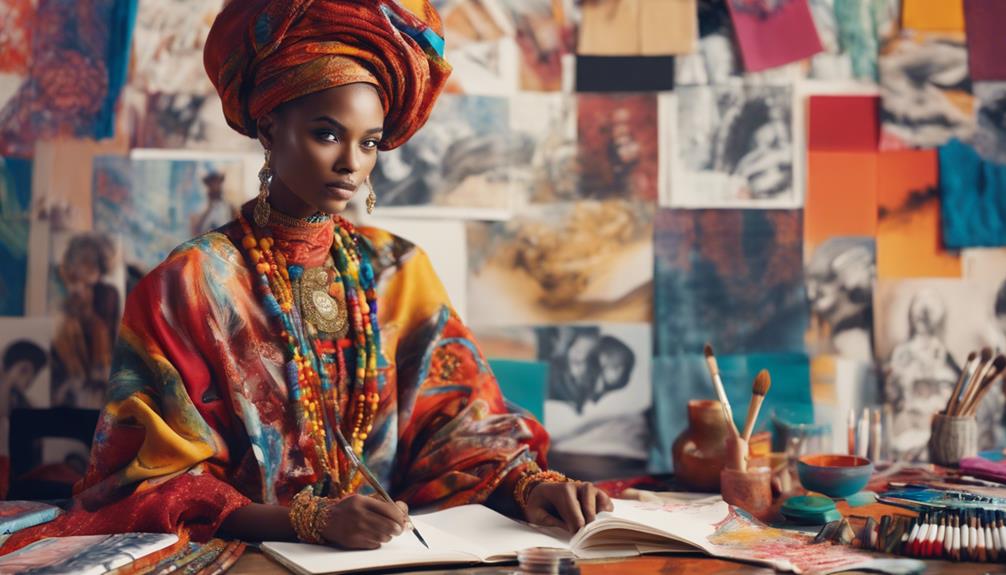
Fashion croquis play a significant role in how fashion is portrayed in film and TV, shaping public perceptions of style and identity.
You'll see how feminist fashion activism utilizes croquis to challenge traditional norms and advocate for inclusivity.
This intersection of art and activism highlights the powerful cultural impact that fashion can have on society.
Fashion in Film and TV
When you watch films and TV shows, you can't help but notice how their fashion choices shape cultural trends and influence what people wear in everyday life. Iconic costumes from classics like 'Breakfast at Tiffany's' and 'The Devil Wears Prada' set benchmarks for style, often becoming the go-to reference for fashion enthusiasts.
Shows like 'Sex and the City' not only spotlighted designers but also commercialized luxury brands, directly impacting what viewers buy. The character wardrobes created buzz, driving consumer behavior and elevating certain labels.
Costume design in films reflects societal changes, as seen in 'Black Panther,' where fashion choices embodied cultural identity and heritage through the Afrofuturism aesthetic.
TV shows often shape perceptions of class and lifestyle. In 'Gossip Girl,' for instance, opulent styles captivated young audiences, reinforcing the allure of wealth and privilege.
Fashion documentaries like 'The September Issue' peel back the curtain on the fashion industry, revealing the power dynamics and creative decisions that dictate trends.
Through these narratives, you see how intertwined fashion is with culture, making it a crucial aspect of storytelling in film and television.
Feminist Fashion Activism
Feminist fashion activism redefines style by challenging traditional gender norms and promoting body positivity, creating a more inclusive industry for everyone. By advocating for diverse representation, brands like Savage X Fenty and Aerie empower women of all shapes and backgrounds. You can see this shift in the way these companies showcase models of various sizes, celebrating the beauty in diversity.
Events such as the 'Feminist Fashion Show' illustrate the powerful intersection of fashion and activism, featuring designs that highlight social issues and champion women's rights. The influence of the #MeToo and Time's Up movements has also inspired designers to craft collections that embody themes of empowerment and resilience, pushing back against misogyny in fashion.
Moreover, research shows that consumers and designers are increasingly prioritizing ethical and sustainable practices, aligning with feminist values of social responsibility and equality. This growing awareness means you can make informed choices when it comes to your wardrobe, supporting brands that reflect your values.
Through these efforts, feminist fashion activism isn't just a trend; it's a movement that encourages you to embrace your individuality and advocate for change within the fashion landscape.
Frequently Asked Questions
How Do I Start Learning Fashion Illustration?
To start learning fashion illustration, gather reference materials, practice basic figure drawing techniques, and experiment with different tools. Engage in daily sketching to refine your skills and develop your unique style in illustrating fashion.
What Is Croquis in Fashion Illustration?
Croquis in fashion illustration are quick sketches that capture the essence of design ideas. You'll use exaggerated proportions to emphasize movement and shape, allowing you to explore clothing concepts without focusing on intricate details.
How to Learn to Draw Croquis?
To learn to draw croquis, start by mastering proportions, sketching outlines with light strokes, and refining details. Experiment with poses, angles, and use both digital tools and traditional materials for diverse techniques and styles.
What Is the 9 Head Theory?
The 9 Head Theory's a proportional guideline for fashion illustration, dividing the figure into nine equal sections. It helps you create elongated, elegant figures, enhancing the visual impact of your designs and allowing for dynamic poses.
How Can Fashion Illustration Skills Benefit a Career in Fashion Merchandising?
Having the ability to create fashion illustrations can greatly benefit a career in fashion merchandising. By being able to visually communicate design concepts and ideas, individuals can better understand and communicate with designers and clients. Additionally, those who learn fashion business skills may have a better understanding of the product development process and be able to effectively merchandise and sell products.
Conclusion
To sum up, diving into fashion croquis not only enhances your illustration skills but also connects you to a rich history of creativity.
Embrace its key characteristics and modern interpretations to express your unique style.
With the right styling tips and a keen eye for vintage pieces, you can elevate your wardrobe while making a cultural statement.
So grab your sketchbook and let your imagination flow—you're ready to make your mark in the world of fashion illustration!
